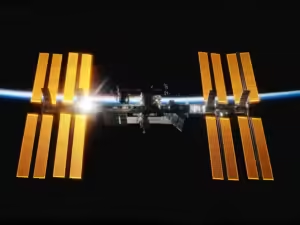ButSpeak.com
News which Matters.

NASA’s International Space Station (ISS) has encountered a new and troubling adversary in its orbit: a resilient multi-drug resistant bacterium named ‘Enterobacter bugandensis.’ This discovery poses significant health concerns for astronauts inhabiting the space station, highlighting the unforeseen challenges of long-duration space missions.
Discovered by scientists during routine microbial analysis, ‘Enterobacter bugandensis’ has adapted and evolved within the unique closed environment of the ISS. This bacteria, notorious for its resistance to multiple antibiotics, is classified as a ‘superbug’ due to its ability to infect the respiratory system, posing heightened risks in the confined space of the ISS.

The research, spearheaded by Dr. Kasthuri Venkateswaran at NASA’s Jet Propulsion Laboratory (JPL) in Pasadena, California, has revealed startling insights into the genetic and functional evolution of E. bugandensis under microgravity and other space-related stressors. Thirteen distinct strains of the bacterium were isolated from the ISS, demonstrating significant genetic divergence from their Earth counterparts.
“These findings underscore how closed environments like the ISS can foster the adaptation and persistence of opportunistic pathogens,” emphasized Dr. Venkateswaran, a leading researcher in space microbiology. Collaborative efforts with the Indian Institute of Technology-Madras have further elucidated the complex interactions of E. bugandensis with other microorganisms aboard the ISS.
The presence of E. bugandensis raises critical concerns for astronaut health, particularly given the altered immune conditions and limited medical resources available during space missions. Professor Karthik Raman from IIT Madras commented, “Microbes continue to defy expectations by thriving in extreme conditions, presenting ongoing challenges for space exploration.”
NASA has highlighted the importance of understanding microbial dynamics in extreme environments to safeguard astronaut well-being. “Closed human-built environments, such as the ISS, subject microorganisms to unique challenges like microgravity and elevated carbon dioxide levels,” stated NASA. Insights gained from this research are crucial for developing effective countermeasures against opportunistic pathogens, thereby protecting astronauts on future missions.
The discovery of E. bugandensis aboard the ISS underscores the ongoing evolution of microbial life in isolated environments and emphasizes the need for continuous vigilance in space hygiene protocols. As scientists delve deeper into these microbial mysteries, the implications for both space exploration and terrestrial healthcare remain profound.